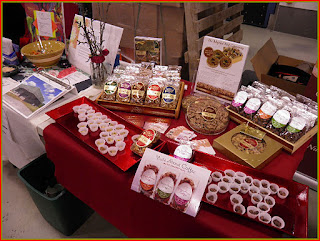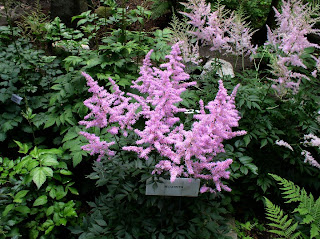
Monday, March 19, 2012
Morning is slow to start here on the mountain today. I took Karl the Wonder Dog out earlier and the 2 mph wind blew lightly in my face and the 47° temperature was obvious. Karl abbreviated his walk and tail-between-legs headed to the house because the coyote convention in the adjacent field was overwhelming to him. It was well attended enough that I had no desire to go there either. We both retreated to the house and here I am awaiting sunrise.
Yesterday was a different story for me and I was out of here early to cut some trees for some friends at the Marshfield Inn and Motel. Then I headed to the Stranahan Memorial Town Forest to check out the sugaring operation there. Last year maple syrup producers in Vermont set a new record of well over one million gallons of syrup produced. This year is a different story and many producers are just catching up to last year's daily totals, some are exceeding them, but many are down significantly. The mild weather, lack of snow pack to keep the tree roots cool, and the unusually warm temperatures, especially at night, have slimmed production. Nightly temps must fall to freezing and mornings like this one do not encourage a good sap flow.
The Stranahan Forest is adjacent to Hollister Hill Farm which is a great place that juggles farming and a bed and breakfast. As I slowed to avoid some road ruts I noticed four cars in the parking lot with three out of state license plates suggesting visitors. The farm is managed by the Light family and maple sugaring is part of what they do very well.
Yesterday was a different story for me and I was out of here early to cut some trees for some friends at the Marshfield Inn and Motel. Then I headed to the Stranahan Memorial Town Forest to check out the sugaring operation there. Last year maple syrup producers in Vermont set a new record of well over one million gallons of syrup produced. This year is a different story and many producers are just catching up to last year's daily totals, some are exceeding them, but many are down significantly. The mild weather, lack of snow pack to keep the tree roots cool, and the unusually warm temperatures, especially at night, have slimmed production. Nightly temps must fall to freezing and mornings like this one do not encourage a good sap flow.
The Stranahan Forest is adjacent to Hollister Hill Farm which is a great place that juggles farming and a bed and breakfast. As I slowed to avoid some road ruts I noticed four cars in the parking lot with three out of state license plates suggesting visitors. The farm is managed by the Light family and maple sugaring is part of what they do very well.
 Sugaring has modernized itself in an attempt to cut labor costs and that means that using galvanized buckets to catch sap and then hand collecting the sap into a tank has been replaced in part by many sugarers. That is not to say that as you travel Vermont you cannot find many sap buckets hanging from trees along the road and in the forests. The new pipeline networks lead the sap through plastic tubing back to the sugar house or into storage tanks. The issue is labor versus price and many do not have the money to make the conversion even though it makes sense. Each tap that involves pipeline averages an installed price of $10 so that's quit a financial commitment for smaller producers. In the days when I was a kid, most every farmer sugared and I remember the old farm ladies next door telling me that the purpose of sugaring was to pay the farm taxes. I suspect that was common back then but now you have to produce a lot of syrup to pay property taxes in Vermont.
Sugaring has modernized itself in an attempt to cut labor costs and that means that using galvanized buckets to catch sap and then hand collecting the sap into a tank has been replaced in part by many sugarers. That is not to say that as you travel Vermont you cannot find many sap buckets hanging from trees along the road and in the forests. The new pipeline networks lead the sap through plastic tubing back to the sugar house or into storage tanks. The issue is labor versus price and many do not have the money to make the conversion even though it makes sense. Each tap that involves pipeline averages an installed price of $10 so that's quit a financial commitment for smaller producers. In the days when I was a kid, most every farmer sugared and I remember the old farm ladies next door telling me that the purpose of sugaring was to pay the farm taxes. I suspect that was common back then but now you have to produce a lot of syrup to pay property taxes in Vermont. So the choice of sap collection is by buckets or pipeline and now there are even more technological recommendations, many coming from the University of Vermont Proctor Maple Research Center, and some coming from sugarers themselves. Research has led to using a vacuum system on the pipelines to actually suck the sap out of the trees. Maybe it would be better to say the vacuum "gently teases the sap out" so you aren't left with the vision of an empty hulk of a maple tree at the end of the season. Fact is that pressure does not appear to harm the trees at all and it does increase sap volume collected.
So the choice of sap collection is by buckets or pipeline and now there are even more technological recommendations, many coming from the University of Vermont Proctor Maple Research Center, and some coming from sugarers themselves. Research has led to using a vacuum system on the pipelines to actually suck the sap out of the trees. Maybe it would be better to say the vacuum "gently teases the sap out" so you aren't left with the vision of an empty hulk of a maple tree at the end of the season. Fact is that pressure does not appear to harm the trees at all and it does increase sap volume collected.Another advance is the use of reverse osmosis to separate water from the main sugar product. This means that the evaporation process that is used to reduce sap to syrup takes less energy and works faster. A sugarer gave me an example yesterday from the night before when he had all his tanks full of sap but through reverse osmosis he boiled everything down to 110 gallons of syrup in about 2 hours versus 15 hours if he had used an oil fired evaporator. If he had boiled down that same sap with a wood fired evaporator it would probably have taken even longer. Neither of these technologies is cheap and in the world of big time syrup production you have to think of payback over ten years.
 The taps that are used have gone from the metal spouts from my day to plastic spouts. The latest generation of spouts encourages longer sap flow, less bacterial build up (hence less tissue cell closure and end of flow) and almost no clogging with a new design that was just released last year. What some folks forget when pouring syrup on their pancakes is that these systems must be kept clean and the osmosis rigs have to be cleaned every day and the entire systems have to be made spanky clean at the end of the season. Miles of pipeline means running water and cleanser through the entire systems and trust me folks, this is a bigger job than washing your dishes in the sink or home dishwasher--lots bigger!
The taps that are used have gone from the metal spouts from my day to plastic spouts. The latest generation of spouts encourages longer sap flow, less bacterial build up (hence less tissue cell closure and end of flow) and almost no clogging with a new design that was just released last year. What some folks forget when pouring syrup on their pancakes is that these systems must be kept clean and the osmosis rigs have to be cleaned every day and the entire systems have to be made spanky clean at the end of the season. Miles of pipeline means running water and cleanser through the entire systems and trust me folks, this is a bigger job than washing your dishes in the sink or home dishwasher--lots bigger!I had a nice time catching up on sugaring and want to remind you there's a little time left to get to a sugar house yourself and see how this is done. It takes 35-40 gallons of sap to make a gallon of syrup and there's a lot involved to get to the end product. Like anything agricultural, there is a lot of behind the scenes work that users don't often see. Kinda like growing flowers which reminds me, I have my own chores to get to today. Need to scoot!
Writing from the mountain above Peacham Pond where the birds are reminding me the sun is up but the bird feeders are empty. Have a nice day!
George Africa
The Vermont Gardener
Vermont Flower Farm
On Facebook as Vermont Flower Farm and Gardens and also as George Africa
On Twitter as vtflowerfarm
And remember, we're always here to help you grow your green thumb!


















